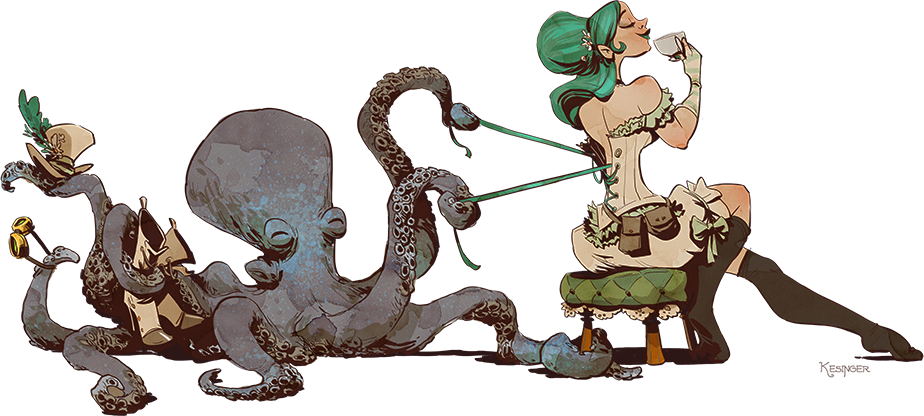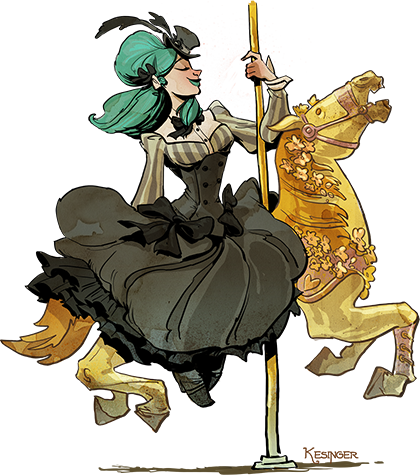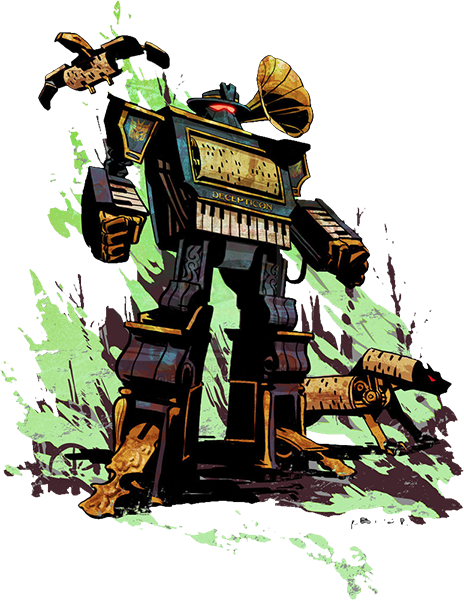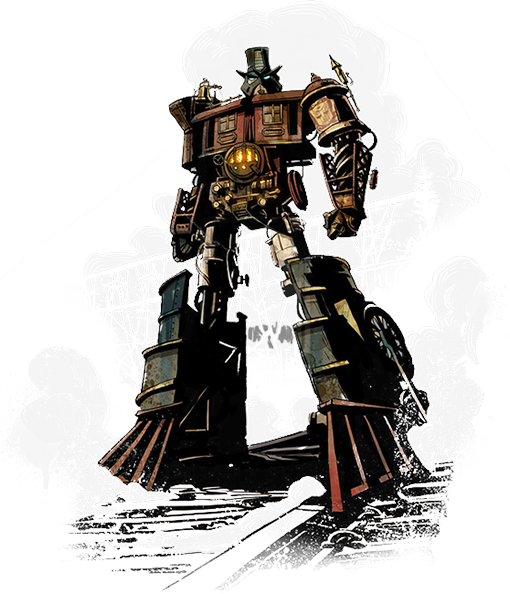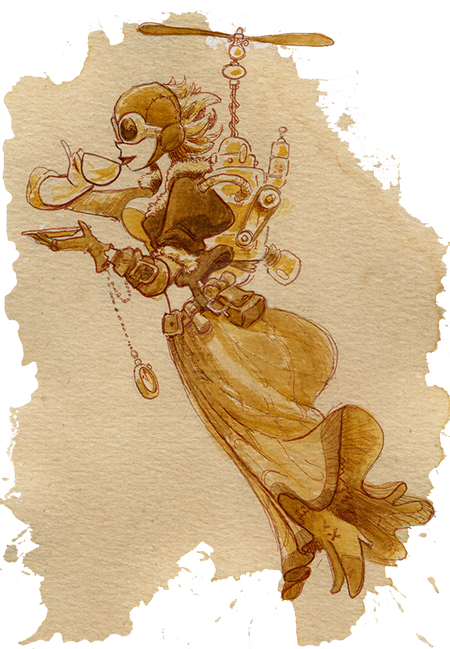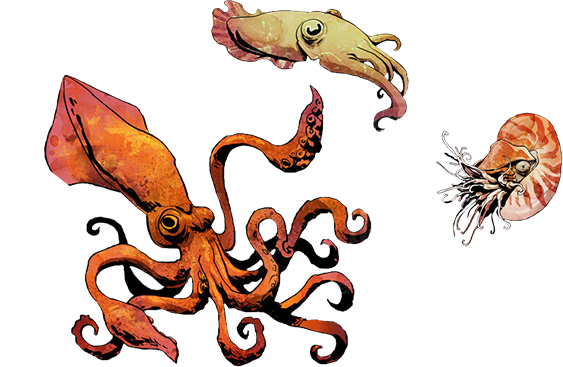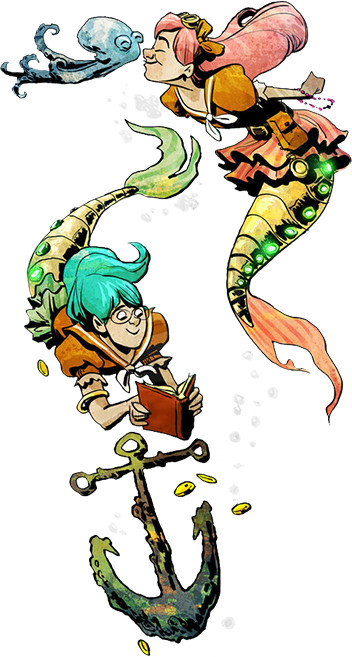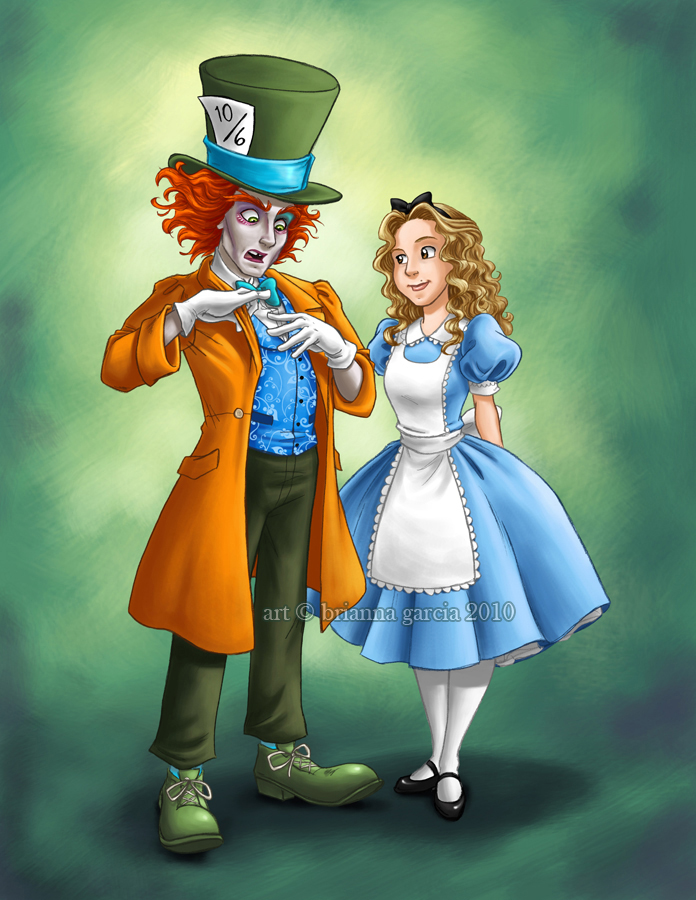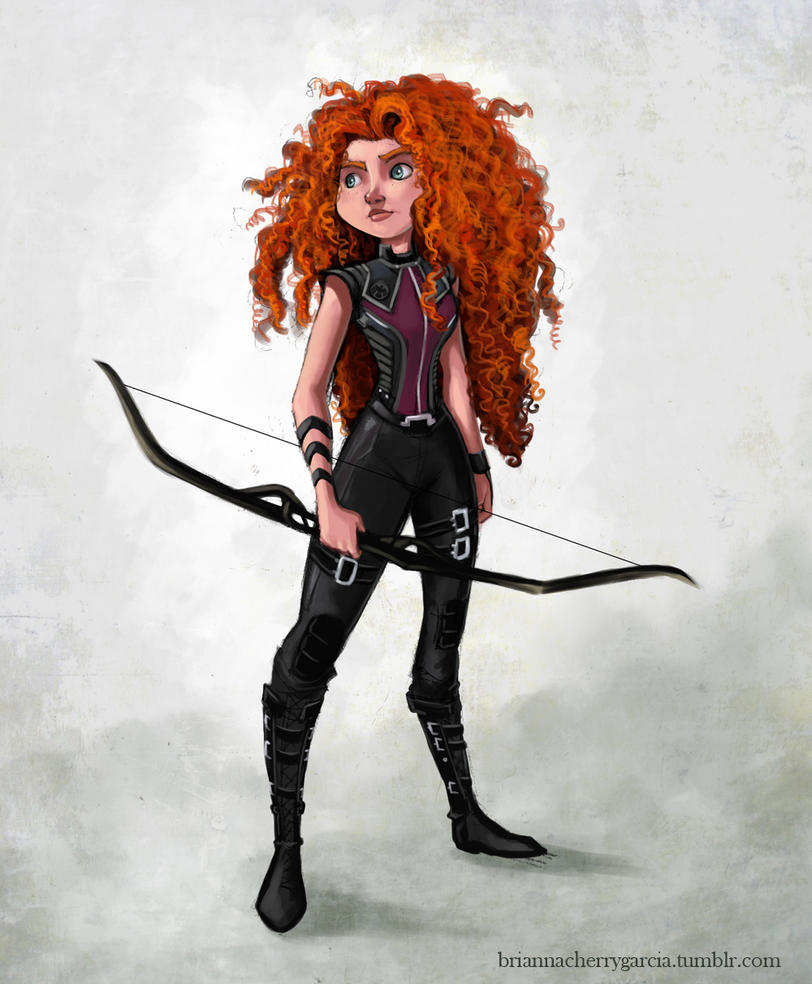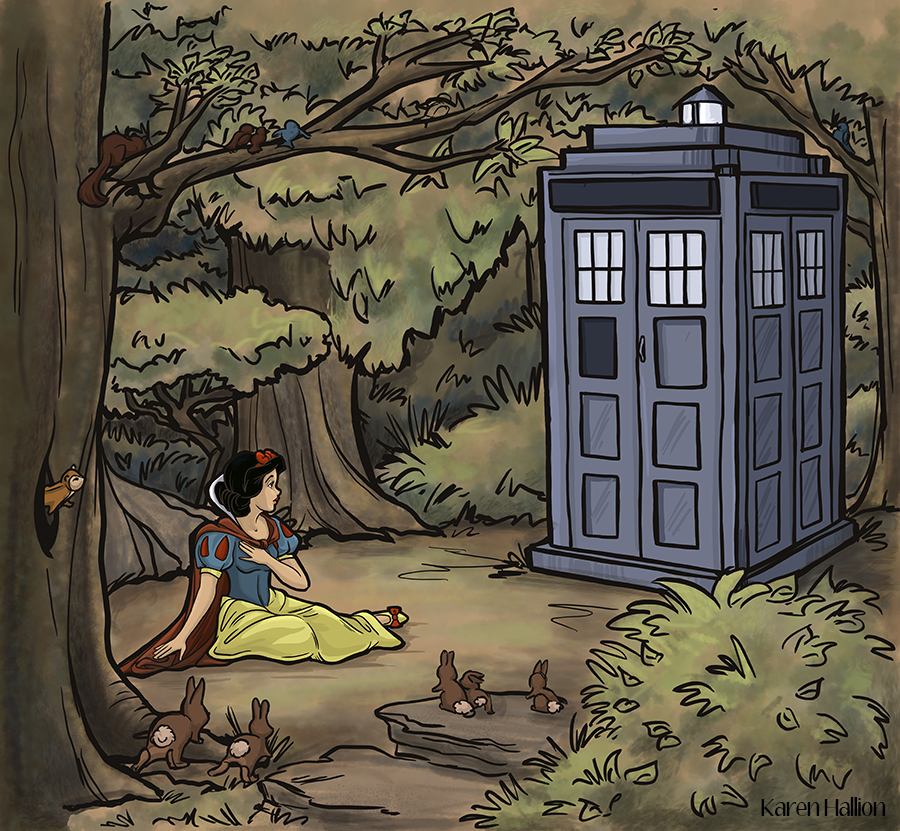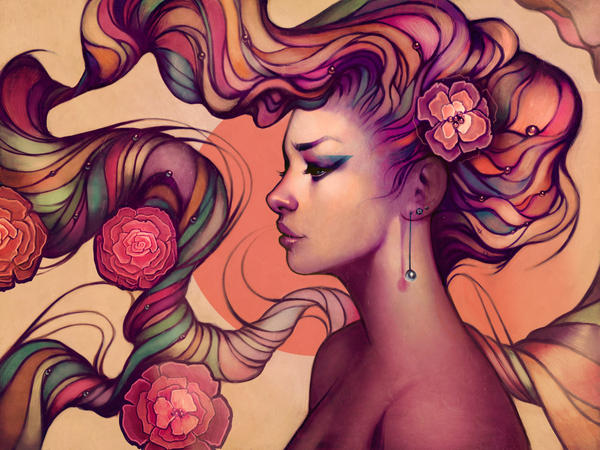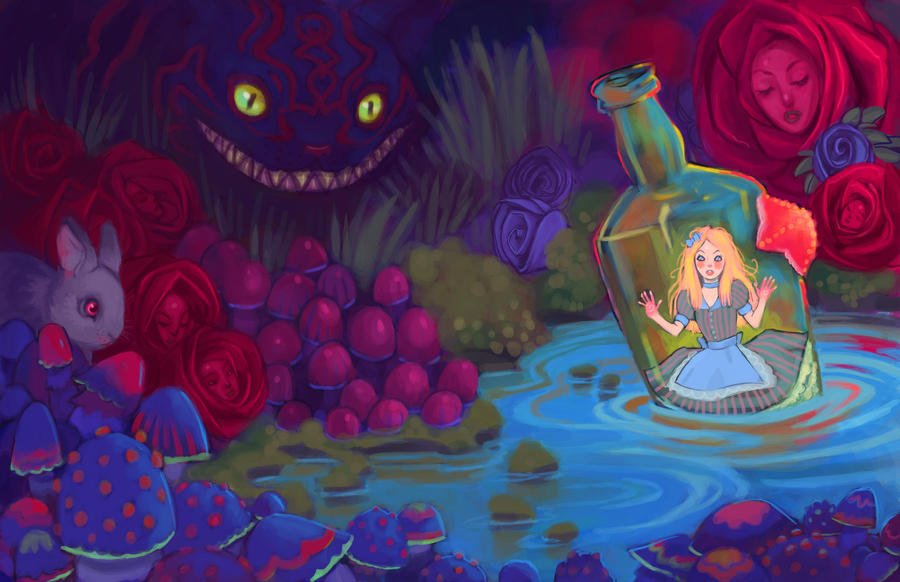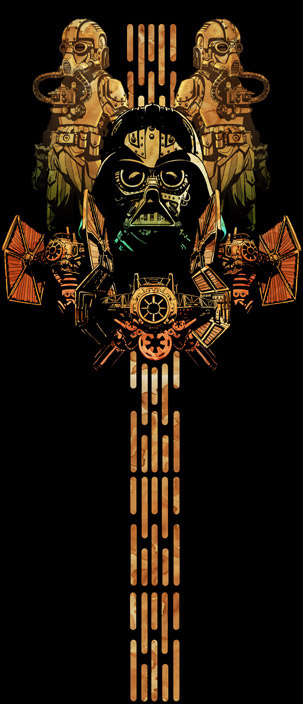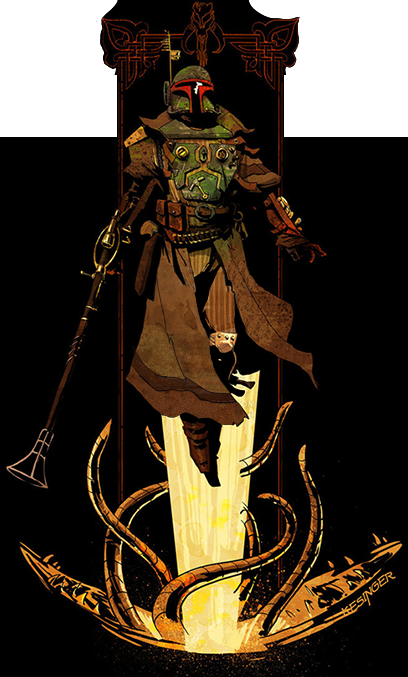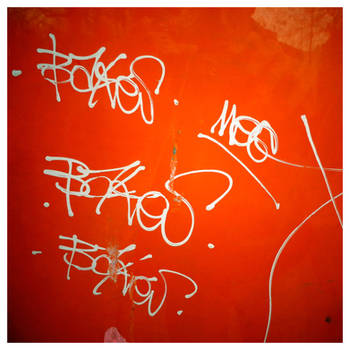There is no cosmic law that states artists must suffer many long years and demeaning day-jobs before a window of opportunity cracks open just enough to hop on through.
His first “day-job” in 1996—he was hired straight out of his senior year of high school—was drawing Tarzan for Disney.
Brian stayed at Disney and he considers every day there a part of his ongoing education as an artist. He most recently worked on “Wreck It Ralph,” and has become active in the story department, where he dreams up fresh narratives and new characters with fellow Story Artists and Disney directors.
But more and more, he is being recognized for his own style and own creations independent of the Disney dream factory right here on deviantART. Deviants are currently singing the praises of several evolving BrianKesinger series.

Victoria is a Victorian-era lady and Otto is her pet octopus. What began as a whimsical sketch of a fine young lady walking her pet octopus on a leash has mushroomed into a fan favorite inspiring cosplay and body art of the green-haired Victoria. Brian is releasing “Walking Your Octopus” to be published by Baby Tattoo Books with a more intimate look at the Victoria and Otto relationship.
Brian’s skills as a storyteller really shine in his characters’ motivations and subtle emotions expressed in facial cues and physical attitudes all in a single image. Making “readers” care about characters, a skill finely honed by his extraordinary Disney experiences, marks him as a great illustrator – a real storyteller.
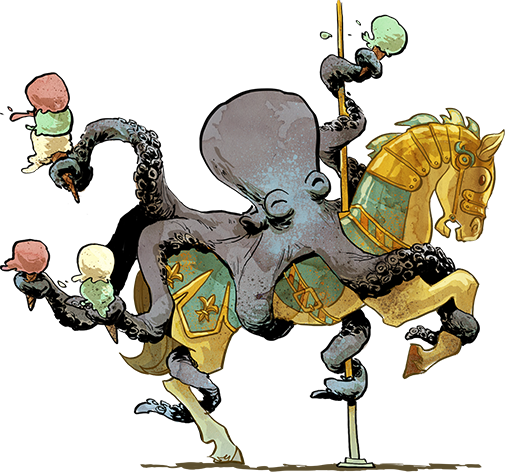

Ever wonder what a Transformers would be like if it had been created with steampunk technology and aesthetic?
Wonder no more.

A delicate mash-up of fetchingly attractive young Victorian-garbed ladies enjoying their afternoon tea, with added accents of Japanese geisha fashion, fantasy figures, steampunk and painted with real tea.
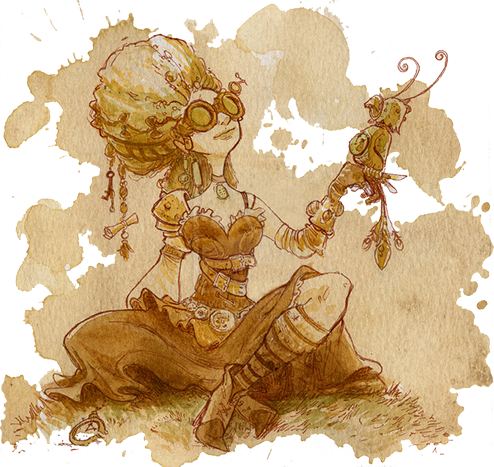
Community of Artists
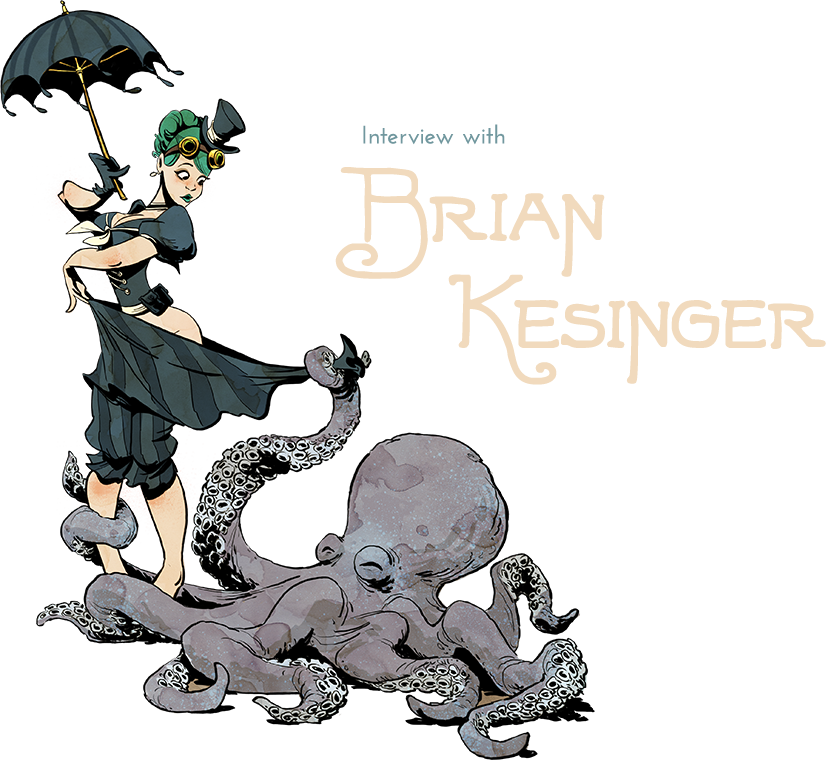
Having had your “dream come true” as a gainfully employed working artist, do you feel a special obligation to help fledgling artists gain a foothold in the business?
No question, that said its not just an obligation, I actually enjoy helping others. My parents are teachers and I think I may have inherited the gene that lets me feel good when I can help someone who might be struggling with a concept finally "get it". The only reason I am where I am in my career right now is because of other artists sharing their knowledge with me. It's one of the great things about the collaborative nature of animation. Having a group of artists that you trust to be able to share your work with is the only way to make your art the best it can be; deviantART is the perfect place for that too. I've seen no other site that connects artists in such a great way in order for you to share your work with others and learn from each other. It's one of the reasons I am a member of the site because its very easy to help share what I know with others and learn so much from the artists that I follow.
I do know that studios look for these mentorship qualities in the artists they hire so it is a good idea for fledgling artists to start learning about how to communicate their ideas on deviantART.
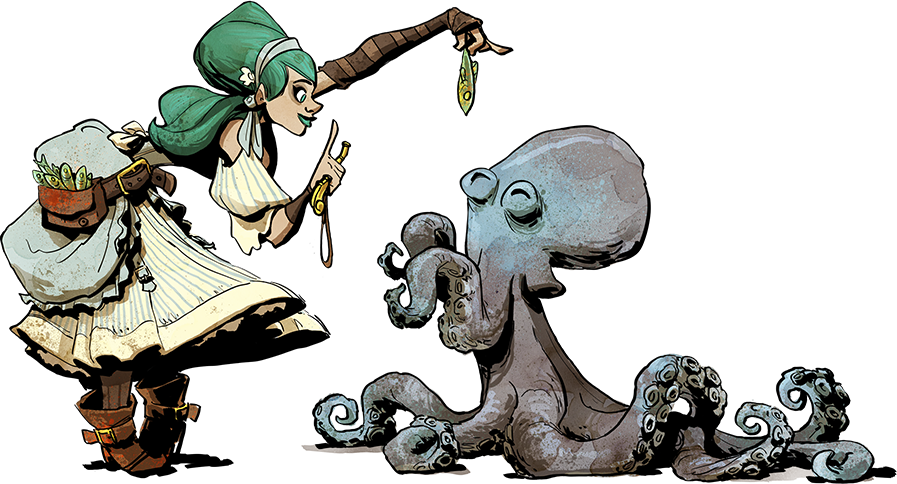
Should illustrators focus on drawing their interesting characters, or do they need to flesh out story narratives for those characters, even if that means collaborating with other artists and writers? What’s the best way forward in this increasingly decentralized arts distribution system?
Story should be driving every detail of your character design. What distinguishes a good artist from a great artist is the presence of storytelling in your work. Their are a lot of good artists out there that can render a bad ass space marine or menacing creature but to take your work to the next level is to consider how that character got to where he or she is in the moment that you decided to draw them.
Consider their upbringing, their bad habits or maybe even their goal in life and once you've done that then try to think of visual queues that can represent those ideas. If you can keep it in the back of your mind you will see great improvement in the quality of your work. All artists are storytellers and the more you infuse story into your work the more it will stand out in the often overwhelming amount of art that is being viewed these days thanks to the decentralized arts distribution you speak of.
What trends in animated narratives do you see, working on the inside of the studio system, that we outsiders might not see?
As you know there is no secret sauce when it comes to creating narratives for film. Lots of writers will try to sell you their books on how to crack the code and while there is merit to those books no two stories are created in the same way. I have worked on over 10 films during my career at Disney and not one film production had a predictable trajectory. I will say that I believe that an animated film really works when it's able to tap into a universal idea and change the point of view to the unexpected. We all understand the concept of an over protective parent who is fearful of sending their child off to school, but when you tell it from the point of view of a fish you get Finding Nemo. A very relatable idea told from an unexpected point of view of fish added a fresh take and a fun world to draw humor from. My book was inspired by not only raising two young children but also our little puppy. Most people can relate to the ups and downs of taking care of something or some one so I thought: what must it be like to take care of an octopus? Once I had that core idea the rest of the story development process really flowed nicely.
How do you see making one’s living as an illustrator changing in the next few years?
I think that audiences are getting more sophisticated and that while there is more opportunity for artists to have their work seen there will be a demand for something new, something people haven't seen. That's really hard to deal with. People are viewing art at a volume and speed like never before. I know I can get lost for hours on deviantART scrolling through Daily Deviantions and think about how many images you are seeing in that hour compared to the old way of browsing in a book store or art gallery. So our challenge will be finding ways to stand out from the crowd and that comes not just with keeping our skills up but also the way we think about things and our point of view on the world.
Can you describe what it’s like to now have cosplayers portraying your characters, or people getting tattoos of Otto & Victoria that began as sketches on your drawing pad?
Cosplay is an art onto itself and I follow several cosplayers on deviantART because I love seeing their craft of turning 2D sketches into 3D art!
I can't think of a higher compliment. It truly is special to see your work embraced in such a way that a person is compelled to pull a character that you created off the page and transform their physical appearance in order to bring my work to life.
Fan Art
If you had to choose the most essential component of education for a new artist beginning her or his journey, what might that be?
To never stop learning. An artist never leaves school they just find new teachers. There was a time when I had not been drawing that much. I had transitioned into more of a CG role at Disney and there was just no time for me to sketch like I used to. I quickly learned that I needed to make time. Your talent is a muscle that must be exercised.
Can you share with us the secrets to always moving a story forward in every single frame and within every element in that frame?
Research and details. We have a saying around work, "one shot; one story." What that means is as an artist you have the power to control every detail within the frame. Especially in animation where you are starting with a blank page and you must decide how to fill it. What helps you decide what to put in there is whatever helps you tell your story. For instance lets say you wanted to paint a scene of a baker who has had lousy business. It's a vey generic idea. But, first you could research what bakeries look like and pick out certain visual details that help show that he gets no business and perhaps even allude to why he gets no business. (Perhaps it is a pretty rundown bakery.) It is a continual layering of visual clues that supports the big idea translating into every shot of a movie on a microscopic level that you would not believe. Artists that can keep these ideas in their minds are very valuable to the animated process.
Storytelling
If you look closely at Brian’s desk in the video you’ll see:
The Golden Zoetrope (an Annie award for individual achievement for storyboarding);
A wall plaque for 10 years of working at Disney;
A Sorcerer Mickey Statue for 15 years at Disney;
A Conductor Mickey for contributions to Disney's Art for Music Education Program.

Britt315 has such great energy in her line work. She has a real talent for capturing an emotion not just through facial expressions but through the entire gesture of the figure.
khallion's art really appeals to the pop culture side of me. Not only is she a great graphic designer but her sense of humor really stands out in her work with the fun twists she puts on geek culture icons.
MeganLara is known for her art nouveau work but I am really inspired by her color palette, especially in her portrait and non t-shirt work.
UlaFish is great about posting her thought process through sharing sketches of facial features or work ups of characters' silhouettes to maximize the visual punch of her designs!
Be one of the first to bring Otto home.
Brian Kesinger’s book is in its first week of publication.
Check it out
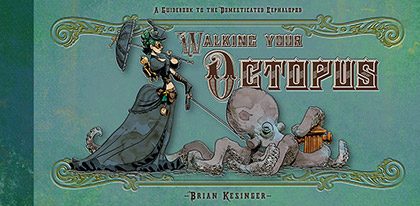

Would you like to share the name(s) of artists on deviantART who have really helped you to improve your craft and technique?
Would it be your preference to gain formal art skills on the job?
Do Brian’s thoughts on fan art change your opinion about learning through example and by copying the masters?
Has luck played a role in your development as an artist?

